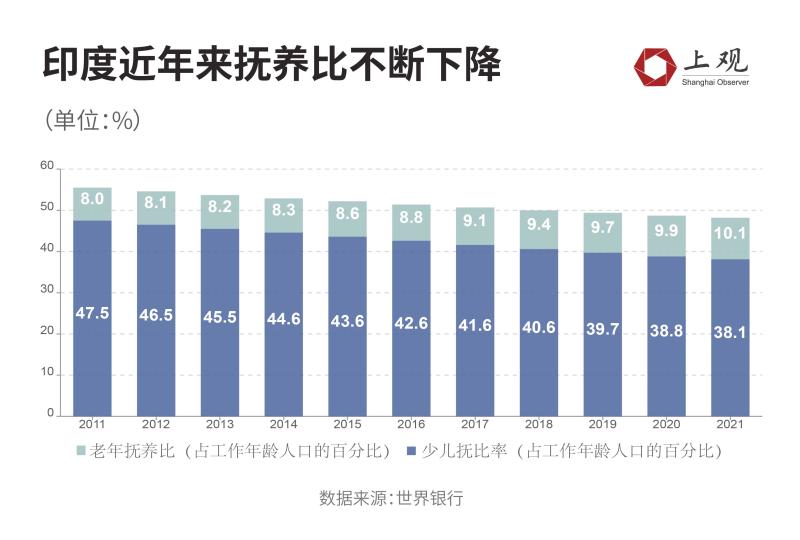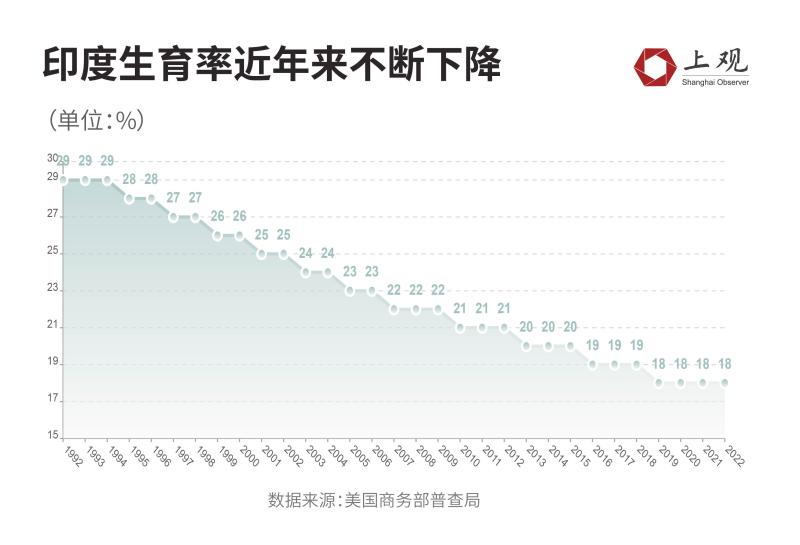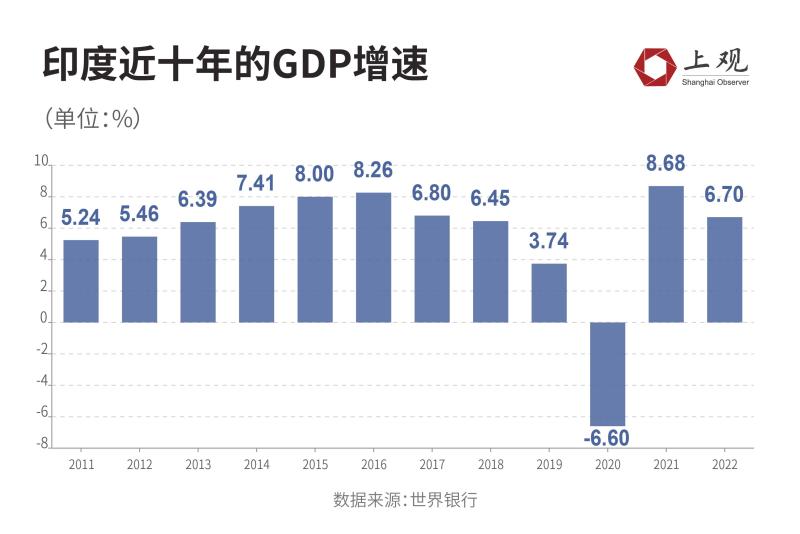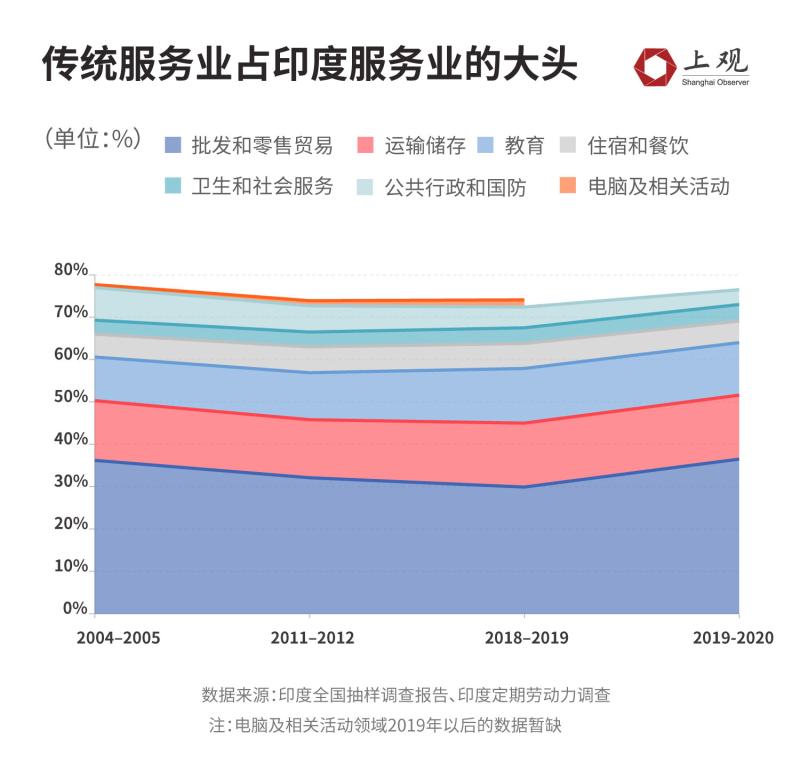But it may not necessarily replicate the path of the "demographic dividend", as India's population surpasses China's | dividend | population
According to the United Nations forecast, the population of India has already reached or even surpassed that of China.
In 2022, India's total economic output has surpassed that of the UK, becoming the world's fifth largest economy. Can India, which has become the world's most populous country, leverage its scale advantage to replicate economic miracles like China in the future?
What is the "demographic dividend" window period
According to the definition of economics, "population dividend" refers to the economic growth effect that accompanies the increase in the proportion of labor force in the total population. The demographic dividend often occurs during a period of population transition when fertility rates are just beginning to decline. When the proportion of children, especially the elderly, decreases, and the proportion of young and middle-aged labor force is less than 50%, it means that the opportunity window period may have arrived.
In recent years, the number and proportion of elderly population in India have been slowly increasing, while the proportion of children under 15 years old has been continuously decreasing, while the number and proportion of working age population have been continuously expanding.

Starting from 2019, the total dependency ratio in India has been below 50% for the first time and has been continuously decreasing. In 2021, the data shows a dependency ratio of 48.1%, with an elderly dependency ratio of 10.1% and a children's dependency ratio of 38.1%.
The reduction in population dependency burden is due to the decrease in the originally high fertility rate.
According to India's national health data assessment, the total fertility rate has fallen from 3.4 in 1992-1993 to 2.0 in 2019-2021. This fertility rate is slightly lower than that of the population.
Due to the initial decline in fertility rates, the current population of India is still very young.
More than half of the population in India is under 30 years old, 27% are under 15 years old, and 12% are over 60 years old, accounting for less than one eighth. The median age of the population is 28.4 years, which is 10 years younger than the median age of 38.8 years in China.

If using dependency ratio data as a benchmark, India is roughly equivalent to China's level around 1996. In 1996, China's dependency ratio began to be less than 50% and has been continuously decreasing since then. By the time it joined the World Trade Organization in 2001, the dependency ratio had dropped to 44.7%. The labor force reached 800 million in 1995, surpassed 900 million in 2002, and peaked at 1.006 billion in 2013 after crossing 1 billion in 2011.
According to data from the Organization for Economic Cooperation and Development in 2021, India's labor force population exceeds 900 million. The Indian government predicts that the labor force will exceed 1 billion in the next 10 years.
India's labor force participation rate is too low
India has a large population and a young age structure, which is similar to China in the early stages of reform and opening up. However, there is a significant difference between India and China, which is the low labor participation rate.
According to the Indian Economic Monitoring Center, in 2022, India's labor participation rate was only 49.5%, which means more than half of the population has exited the labor market. This number is far lower than the period when China's population dividend began and also lower than the current labor participation rate in China.

The labor participation rate of Indian women is even more dismal, with a greater gap compared to China.
From 1990 to 2006, at least 27% of eligible working women in India joined the workforce. But after India transitioned from a low-income country to a middle and low-income country in 2012, women's labor participation rate continued to decline and has not been able to recover.
In 2022, according to World Bank data, the female labor force participation rate in India is 22%, compared to 58% in China.
The data monitored by India itself is even more dismal. According to the Indian Economic Monitoring Center, approximately 12% of working age women worked or wanted to work in February 2020; But by October 2022, this proportion will decrease to only 10%.
In some northern regions and Hindi speaking regions, women's labor participation rates are even in single digits. This means that over 90% of women completely withdraw from the labor market.

Besides women, the labor force participation rate of men is also decreasing.
From February 2020 to October 2022, India's male labor force increased by 46 million. If the labour force participation rate remains the same, there will be another 33 million men looking for work. On the contrary, the number has only increased by 1.3 million. In fact, nearly 32 million men of working age have dropped out of the labour market.
How can we reap the demographic dividend and develop the economy with such a low labor participation rate? This is a very serious problem for India.
Insufficient manufacturing positions
Why is there a downward trend in India's labor participation rate?

In terms of GDP figures, the Indian economy still looks good.
India's GDP growth rate continued to rise from 2011 to 2016, reaching 8.26% in 2016. Although it later declined, it saw a growth rate of 8.68% in 2021 and 6.7% last year.
Why hasn't a growing economy created enough jobs? This starts with the economic structure of India.
The growth of the Indian economy still largely relies on agriculture and services. The data for the fiscal year 2020-2021 shows that the service industry accounts for nearly 54% of India's GDP, while agriculture still accounts for as high as 20% of India's GDP and industry accounts for 25.9%. Among them, the manufacturing industry, which is the most capable of absorbing labor, accounts for only 14.4%.
The Indian government proposed the "Made in India" target in 2014, which includes an average annual growth rate of 12% to 14% in manufacturing output, the creation of 100 million new manufacturing jobs, and a contribution rate of 25% to GDP by 2020. However, in reality, the proportion of India's manufacturing industry to GDP has been declining since 2015, reaching only 14% in 2021.

Therefore, in the past decade, employment in India's manufacturing sector has been stagnant.
Between 2011-2012 and 2018-2019, the manufacturing industry experienced a decline in employment of 3.3 million people. After 2019, there has been a rebound in employment in the manufacturing industry, but it has not yet recovered to the level of 2011. At the same time, the number of agricultural employment has begun to rise, with 2.5 million people engaged in agriculture in the fiscal year 2020-2021, an increase of 20% compared to the fiscal year 2018-2019.
The IT service industry has a very small proportion
The continuously growing service industry currently cannot solve the problem of low labor participation rate. The service industry in India accounts for over half of GDP, but only provides 32.3% of employment capacity.
Traditional services such as wholesale and retail trade, transportation, public administration, and defense still account for the majority of employment in the service industry. These job positions have low salaries and involve physical labor. However, the proportion of malnourished population in India is still as high as 16%, and these industries cannot attract women into the labor market.

The IT outsourcing business in India, which we often hear about, actually accounts for a very small proportion in the overall service industry, only 1.7% by 2019, which is negligible among the total employed population.
To increase the number of people employed in modern services, higher levels of education and skills are required. However, the education level in India is generally low, which may lead to some people not having enough skills to participate in the labor market.
According to OECD data, the proportion of the Indian workforce who have not completed high school education is 77.6%, while the proportion of vocational and higher education is 12.9%. The proportion of those who have completed high school education is the lowest, only 9.4%.
Low labor productivity
The demographic dividend is not only related to labor participation rates, but also influenced by labor productivity. And for India, this is also a challenge.

In 2021, the labor productivity per unit of employment in India was $6688, while in China, the labor productivity per unit of employment was $16512. That is to say, the value that each employed worker in China can produce is 2.5 times that of India.
Meanwhile, the rate of improvement in labor productivity in India is relatively slow. From 2011 to 2021, the average annual growth rate of China's labor productivity was 6.7%, while that of India was 5.1%.
If labor productivity cannot be improved, even if labor participation rates improve, it will be difficult to effectively promote economic development through population dividends.
Hu Zuquan and Ma Ting, experts from the Economic Forecasting Department of the National Information Center, mentioned in their analysis of the demographic dividend in India that "due to multiple factors such as industrial structure, comprehensive population quality, social and cultural factors, and gender discrimination, India is likely to miss the demographic dividend window period, where 'there is no population, but there is no dividend'.".
For India, unless it can truly improve population quality and find the driving force for economic transformation, the population opportunity window period may not be a demographic dividend, but a demographic disaster, let alone replicating the growth miracle of the "next China".





